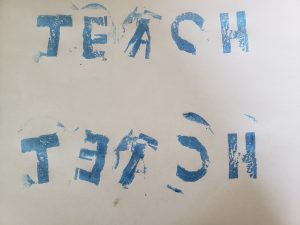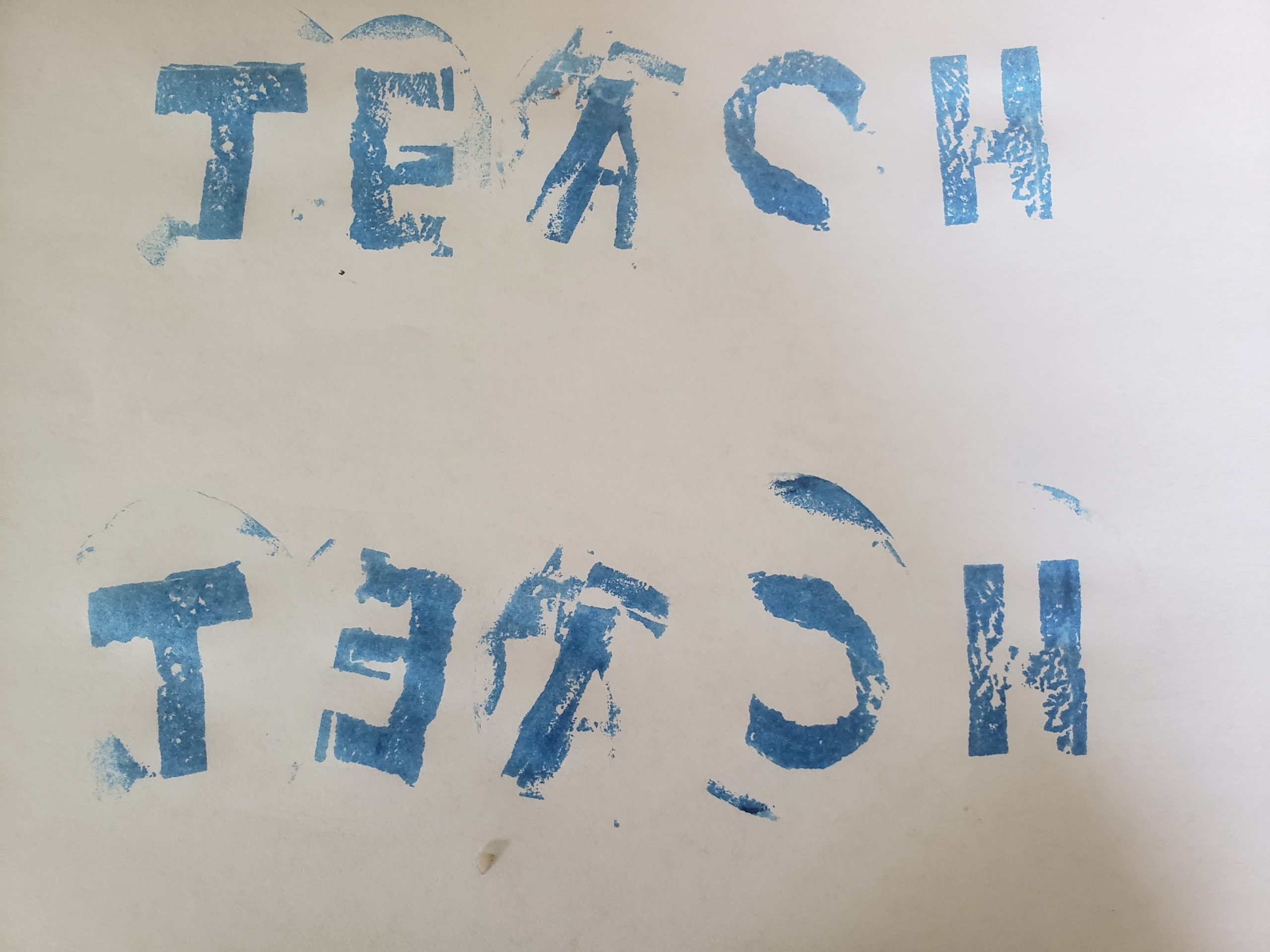Task 4: The Potato Printer
At the university where I completed my undergrad, I had access to a printing press, thanks to my English majoring roommate we were able to spend some of our free time experimenting with it. It was interesting and challenging to figure out how to lay the pieces and borders out in order to fit on the page the way it was imagined. It took so much time to come up with the layout, and then figure out how it would work on the page, let alone rolling the block with ink so that it was even for each individual print. This week’s video, “Upside Down, Left to Right: A Letterpress” reminded me of how much I enjoyed learning about the printing press and how to use it.
Creating the potato print was a very frustrating task.
I should have spent more time planning – on cutting my potato into better stamping sections but also in the planning of the letters. My letters, in the end, were roughly the same size, even though the chunks of potato were vastly different. I didn’t think to make sure the letters were level or even centred in the piece of potato for stamping.

I ended up creating each letter quite quickly, not spending much time on the details. Some stamps did fairly well and others were too shallow and allowed the rim of the potato to appear around the letter.
When choosing the five-letter word to create I wanted to use letters that would allow me to carve them as we would read them so that I could simply flip them around when stamping. I also found it easier to block out the capital letters versus the finicky corners and edges of the lowercase.
I was quite careful and thought through my stamping on the first round making sure each letter was facing the right direction. But found myself a little more comfortable and cocky on the second attempt which shows my very poor craftsmanship.
Even though I stamped the word TEACH one right after another, I was unable to produce the word so that it was identical. I attempted to grab the potato stamp in the exact same way and have it at the same angle. My first attempt at the E and the A were not cut deep enough into the potato, which led to the edge of the potato leaving a mark. In my second attempt, I tried to press lighter on the E which did create a nicer stamp – however, I neglected to check the direction of my letter. The A was an awful stamp to begin with. I ended up having a small piece of potato, not wanting to be wasteful used it anyway. I pressed too hard leaving behind a very messy letter. You would think that I would have learned from my E to better check the direction of my letter but again was careless in stamping the C. Overall, I don’t think any Monastary or printing press would find this resume very desirable to hire me.
The skill and ability it takes to reproduce text to look the same each time is something that must have taken years to perfect. It requires unwavering attention to detail. The ability to open the letter tray of the printing press and lay each letter out, lock it in place, then to ink and roll was an incredible improvement to the earlier process and allowed for so much more to be printed.

Hi Heidi,
Thanks for your comment on my page. I can totally see what you meant by the obvious mistakes!
After this exercise, I totally agree with you that laying each letter out to reproduce text to look identical each time would take lots of time to perfect. It’s both a science and an art!
Thinking about it now, if only you created some sort of mechanism to lock your potato stamps in place. I wonder if you could use an elastic to snap them together, or stick toothpicks through them or something. 🙂